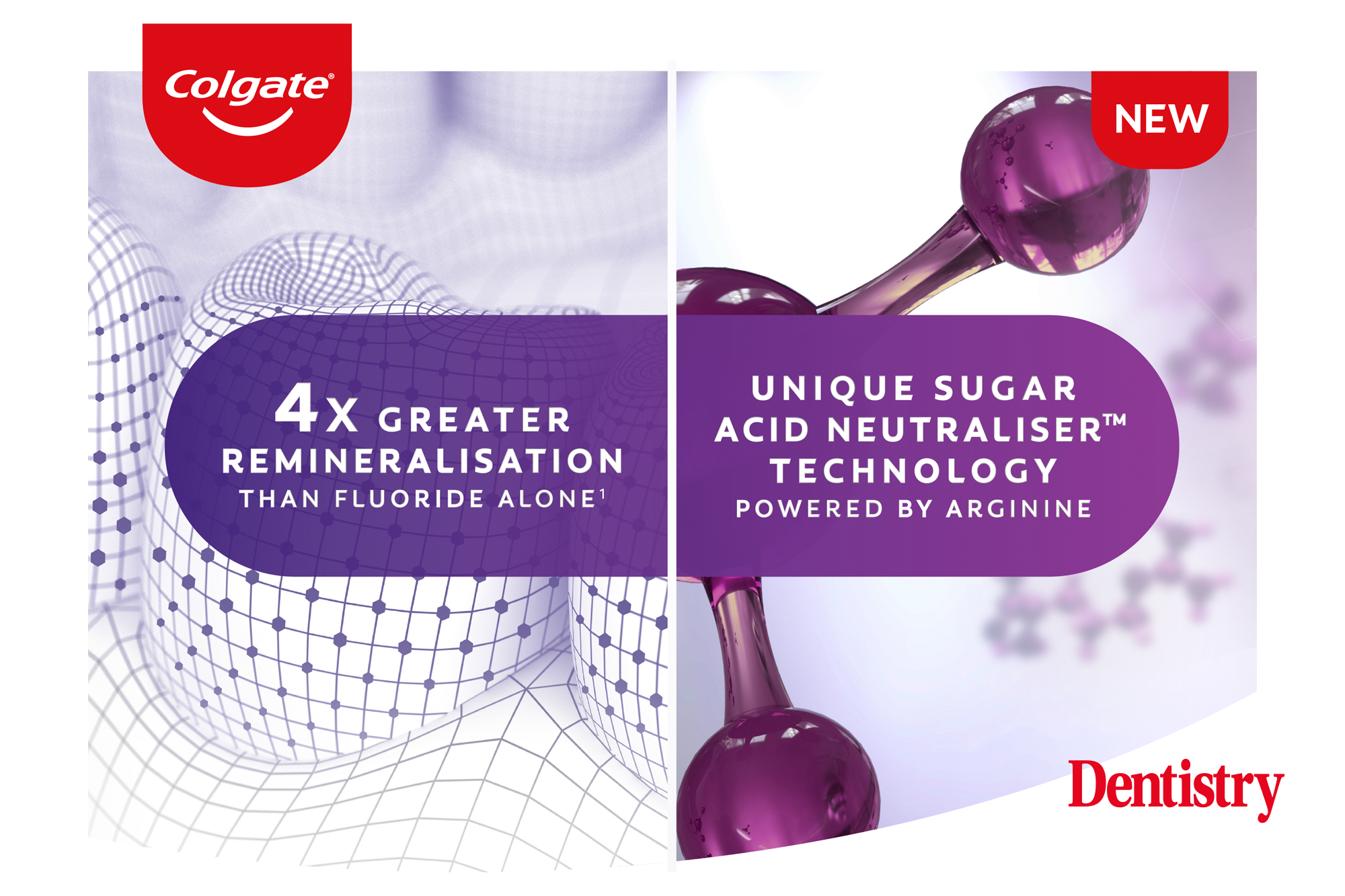
Colgate discusses some of the causative and protective factors contributing to the prevalence of childhood caries.
Improving the oral health of children is a priority for the Office for Health Improvement and Disparities. Their ambition is that every child will be free of dental caries. This will enable them to have the best start in life (Office for Health Improvement and Disparities, 2022).
Childhood caries prevalence and severity data show that to achieve this goal further caries prevention strategies and interventions are required.
Causative and protective factors for childhood caries
The caries process is a dynamic balance between causative and protective factors (Cantore et al, 2013) (Cummins, 2010).
Evidence-based caries prevention includes balancing the levels of oral bacteria, controlling consumption of sugary foods, and strengthening the enamel with fluoride (Alliance for a Cavity-Free Future, 2023). Fluoride reduces dental caries and delays the onset of the cavitation process. But it does not prevent the production or effects of bacterial plaque acid which initiates the caries process (Cantore et al, 2013) (Cummins, 2010).
By introducing technology to neutralise bacterial plaque acid there is an opportunity to control the harmful effects of cariogenic bacteria. When combined with fluoride, this delivers advanced caries prevention (Cummins, 2010).
Sugar Acid Neutraliser is Colgate’s unique technology powered by arginine – clinically proven to provide superior caries prevention (Cummins, 2010).
Arginine is metabolised by arginolytic bacteria, producing ammonia which neutralises plaque acid (Wolff et al, 2013) (Santarpia et al, 2014). This process promotes a more alkaline pH that is unfavourable to cariogenic bacteria. Therefore, their ability to function is reduced (Wolff et al, 2013). In turn, this reduces enamel demineralisation (Cantore et al, 2013) (Cummins, 2010).
‘Significantly increases plaque pH to a healthy level’
Saliva in neutral pH helps maintain mineral supersaturation which increases the efficacy of fluoride and calcium. This prevents enamel demineralisation and promotes enamel remineralisation (Cantore et al, 2013) (Santarpia et al, 2014).
Despite the introduction of the ‘Sugar Tax’ in April 2018, children still consume twice the amount of recommended sugar. Half of the sugar consumed comes from snacks and sugary drinks (NHS, 2023).
Education plays an important role in helping parents reduce their child’s sugar consumption. However, snacking is an important energy-balance related dietary behaviour in children (Gibson et al, 2020). Parents may not be conscious of hidden sugars found in some ‘healthy’ snacks. Many receive conflicting advice regarding healthy and unhealthy snacks. For example, dried fruit.
Dental professionals provide dental health education to children and their families by providing tailored advice. They can also teach new skills and regularly reinforce key messages. Health information alone may increase knowledge. However, it may not achieve sustained changes in behaviour for most families (Department of Health and Social Care, 2021).
Sugar Acid Neutraliser
With Colgate’s unique Sugar Acid Neutraliser technology powered by arginine, children have up to 20% fewer new cavities in two years (Kraivaphan et al, 2013) (Li et al, 2015).*
The combination of Sugar Acid Neutraliser technology plus fluoride results in four times greater remineralisation (Cantore et al, 2013).** It is shown to be statistically significantly more effective than fluoride alone in reducing the progression of carious lesion to cavitation (Kraivaphan et al, 2013) (Li et al, 2015).*
Recommend the new Colgate Kids toothpaste range.

*Compared to regular 1450 ppm fluoride toothpaste over two years.
**Versus fluoride alone.
References
- Cantore R et al (2013) ‘In situ clinical effects of new dentifrices containing 1.5% arginine and fluoride on enamel de- and remineralization and plaque metabolism’, Journal of Clinical Dentistry
- Cummins, D (2010) ‘Dental Caries: A Disease Which Remains a Public Health Concern in the 21st Century— The Exploration of a Breakthrough Technology for Caries Prevention’, Journal of Clinical Dentistry, 21, pp. 25–37
- Gibson et al (2020) ‘Influences of parental snacking-related attitudes, behaviours, and nutritional knowledge on young children’s healthy and unhealthy snacking: The ToyBox study’, Nutrients, 12(2), p. 432
- International Dental Charity (2023) The Alliance for a Cavity-Free Future
- Kraivaphan P et al (2013) ‘Two-year caries clinical study of the efficacy of novel dentifrices containing 1.5% arginine, an insoluble calcium compound and 1,450 ppm fluoride’, Caries research
- Li, X et al (2015) ‘Randomized clinical trial of the efficacy of dentifrices containing 1.5% arginine, an insoluble calcium compound and 1450 ppm fluoride over two years’, Journal of Clinical Dentistry
- NHS NHS Better Families – Sugar, NHS choices.
- Office for Health Improvement and Disparities (2021) Delivering Better Oral Health: An evidence-based toolkit for prevention, GOV.UK
- Office for Health Improvement and Disparities (2022) Child oral health: Applying all our health, GOV.UK
- Santarpia, R.P. et al (2014) ‘A 12-week clinical study assessing the clinical effects on plaque metabolism of a dentifrice containing 1.5% arginine, an insoluble calcium compound and 1,450 ppm fluoride’
- Wolff M. et al (2013) ‘In vivo effects of a new dentifrice containing 1.5% arginine and 1450 ppm fluoride on plaque metabolism’, Journal of clinical dentistry.


